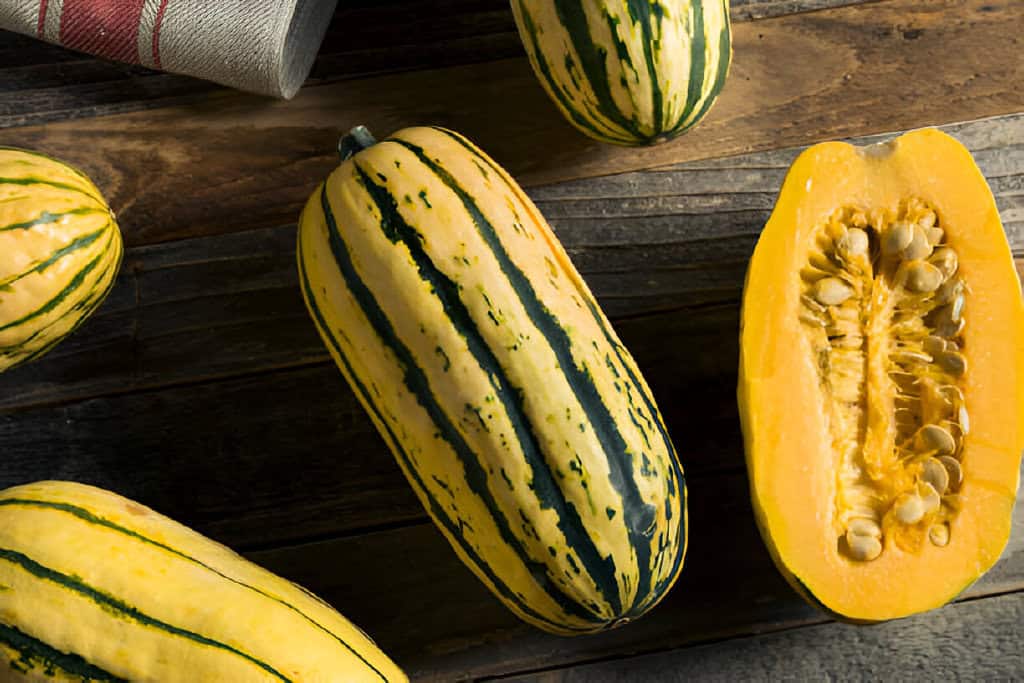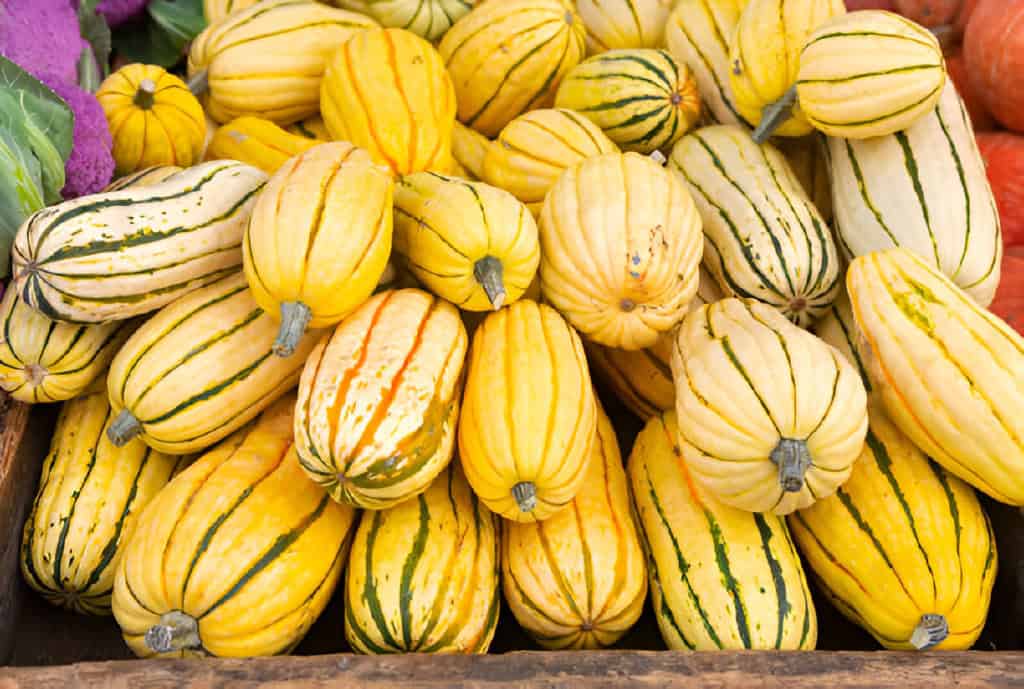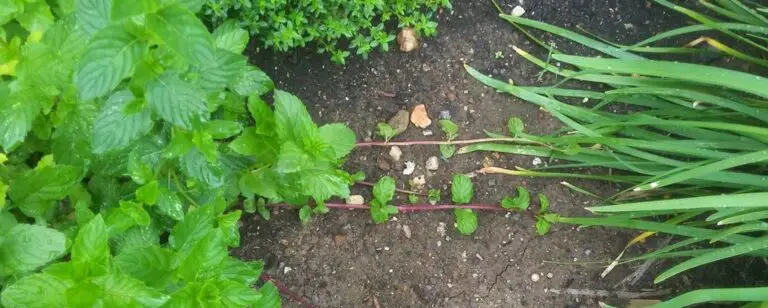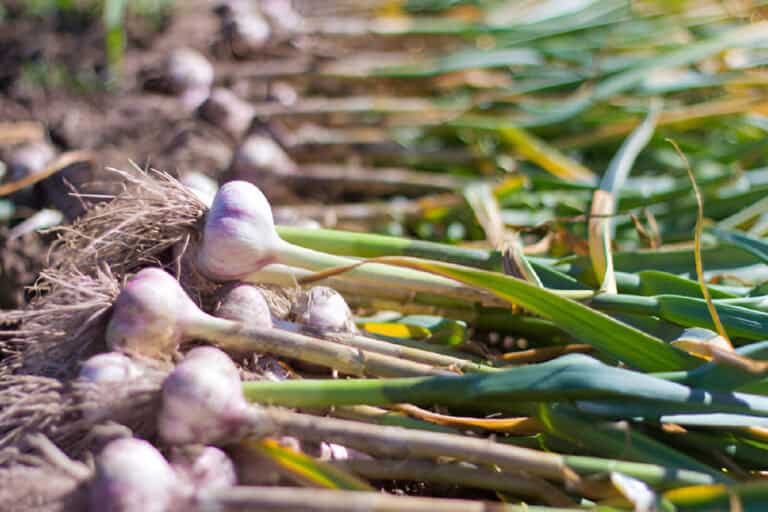How to Tell If Delicata Squash Has Gone Bad? (Identify Before Cooking)

Delicata squash, a favorite in many kitchens for its sweet, nutty flavor and creamy texture, is a delightful addition to a variety of dishes. However, like all produce, it has a shelf life.
Knowing how to identify if delicata squash has gone bad is essential to avoiding any unpleasant surprises when you’re ready to cook. This guide will help you recognize the signs of spoilage and ensure your squash is fresh and ready to enjoy.
Understanding Delicata Squash

This winter squash is known for its oblong shape, cream-colored skin with green stripes, and sweet, nutty flavor. Its thin skin sets it apart from other winter squashes, making it easy to peel and prepare. The flesh inside is a vibrant yellow-orange, firm, and smooth, indicating its freshness and quality.
In the kitchen, delicata squash shines due to its versatility. It can be roasted, sautéed, stuffed, or even added to soups and stews. Roasting brings out its natural sweetness. It makes the meat tender and caramelized. This pairs well with many seasonings and ingredients. When stuffed, delicata squash becomes a hearty main dish, filled with grains, vegetables, and proteins for a nutritious meal.
Proper storage is essential to maintaining the quality of delicata squash. Store whole squash in a cool, dry place away from direct sunlight, and it can last for several weeks.
Once cut, wrap the pieces tightly in plastic wrap or put them in an airtight container in the fridge. Use them within a few days to keep them fresh and tasty.
How Do You Know If Delicata Squash Has Gone Bad?
Visual Inspection
The first step in determining whether your delicata squash has gone bad is a thorough visual inspection. Here are some key indicators:
- Skin Color: Fresh delicata squash has a pale yellow color with green stripes. If the skin appears dull, discolored, or has dark spots, it may be starting to spoil.
- Mold: Check for any signs of mold, especially around the stem and any cuts or bruises. Mold can appear as fuzzy patches in various colors, such as white, black, or green.
- Wrinkles and Soft Spots: Healthy delicata squash has smooth, firm skin. Wrinkles, soft spots, or a shriveled appearance indicate the squash is past its prime.
| Indicator | Fresh Squash | Spoiled Squash |
| Skin Color | Pale yellow with green stripes | Dull, discolored, dark spots |
| Mold | None | Fuzzy patches (white, black, green) |
| Texture | Smooth and firm | Wrinkled, soft spots, shriveled |
Smell Test
Your sense of smell can be a reliable tool in detecting spoiled delicata squash. Fresh delicata squash has a mild, slightly sweet aroma. If you notice any off-putting, sour, or rotten smells, it’s a clear sign that the squash is no longer good. Always rely on your nose; if something smells off, it’s better to err on the side of caution and discard the squash.
Texture and Feel
Feeling the squash is another effective method to determine its freshness. When gently pressed, fresh delicata squash should feel firm and resilient. If it feels mushy or has any liquid oozing out, it’s a sure sign that the squash has spoiled. Also, check for any slimy residue on the skin, which is an indication of bacterial growth and spoilage.
| Also read: Does Acorn Squash Taste Like Pumpkin? |
Cutting Into the Squash
If your delicata squash passes the visual, smell, and touch tests, the final step is to cut it open. Here’s what to look for:
- Flesh Color: The flesh of fresh delicata squash should be a vibrant yellow-orange. If it appears dull, grayish, or has dark spots, it’s likely spoiled.
- Seeds: Check the seeds for any signs of mold or decay. Fresh seeds should be plump and pale in color. Discolored, slimy, or shriveled seeds indicate spoilage.
- Texture: The flesh should be firm and smooth. If it feels mushy or has an off texture, it’s best to discard the squash.
Tips for Selecting Fresh Delicata Squash
To avoid dealing with spoiled squash, it’s essential to select fresh delicata squash from the start. Here are some tips to keep in mind when shopping:
- Appearance: Choose squash that is free of blemishes, soft spots, and wrinkles. The skin should be smooth and firm.
- Weight: A fresh delicata squash feels heavy for its size. This indicates that the flesh inside is still full of moisture and nutrients.
- Stem: The stem should be intact and dry. A soft or shriveled stem can be a sign of spoilage.
What Should the Inside of Delicata Squash Look Like?
The inside of a delicata squash should be a vibrant yellow-orange color, indicating its freshness and quality. When you cut it open, the flesh should appear firm and smooth, free from any mushiness or discoloration. The seeds, nestled in the center, should be plump and pale, showing no signs of mold or decay.
The flesh looks dull or has grayish spots. The seeds are slimy or shriveled. These are signs that the squash is too old. Ensuring the inside looks as described will help you select the best delicata squash for your meals.
Proper Storage Techniques
Delicata squash, unlike some winter squashes, has a thinner skin and a shorter shelf life. When stored in a cool, dry place, it can last for several weeks. However, once cut, it should be stored in the refrigerator and used within a few days.
Storing delicata squash correctly can extend its shelf life and maintain its quality. Follow these storage tips:
- Whole Squash: Store whole delicata squash in a cool, dry place, such as a pantry or cellar, where temperatures remain around 50-55°F (10-13°C). Avoid storing it in direct sunlight or humid areas.
- Cut Squash: Once cut, wrap the squash tightly in plastic wrap or place it in an airtight container. Store it in the refrigerator and use it within a few days to ensure freshness.
| Related: Can Yellow Squash Ripen Off the Vine? |
Cooking with Delicata Squash
When your delicata squash is fresh and ready to use, there are numerous ways to incorporate it into your meals. Here are a few cooking methods to enjoy this versatile vegetable:
- Roasting: Cut the squash into rings or halves, remove the seeds, and roast with olive oil, salt, and pepper. Roasting brings out the natural sweetness and creates a caramelized, tender texture.
- Stuffing: Hollow out the squash halves and fill them with a mixture of grains, vegetables, and proteins for a hearty meal.
- Sautéing: Slice the squash into thin rings and sauté with garlic and herbs for a quick and delicious side dish.
- Soups and Stews: Add cubed delicata squash to soups and stews for added flavor and nutrition.
Conclusion
Knowing how to tell if delicata squash has gone bad is essential for ensuring the safety and quality of your meals. By following the visual, smell, and touch tests outlined in this guide, you can confidently determine the freshness of your squash.
Proper storage and selection practices will also help you. They will help you enjoy the delicious taste and health benefits of delicata squash. And, they will help you avoid any unpleasant surprises. Happy cooking!






